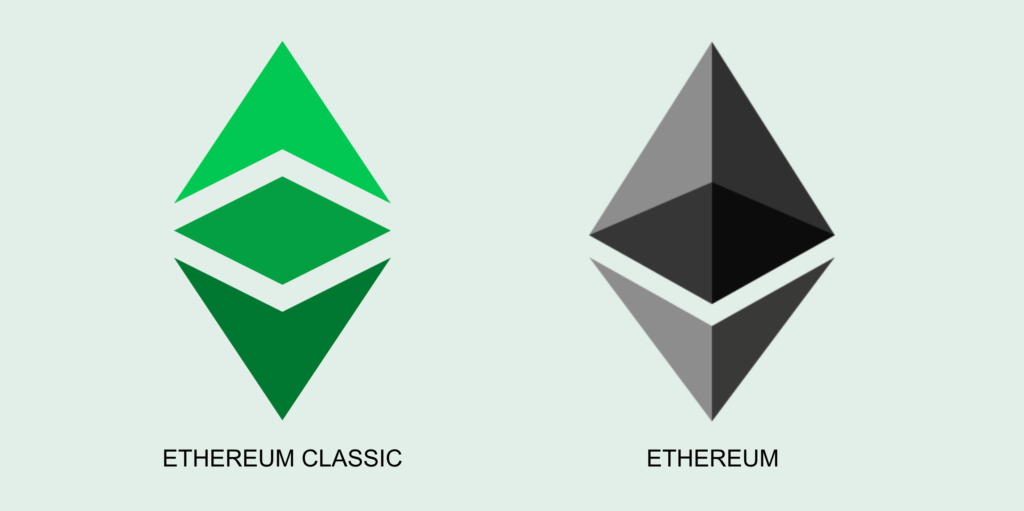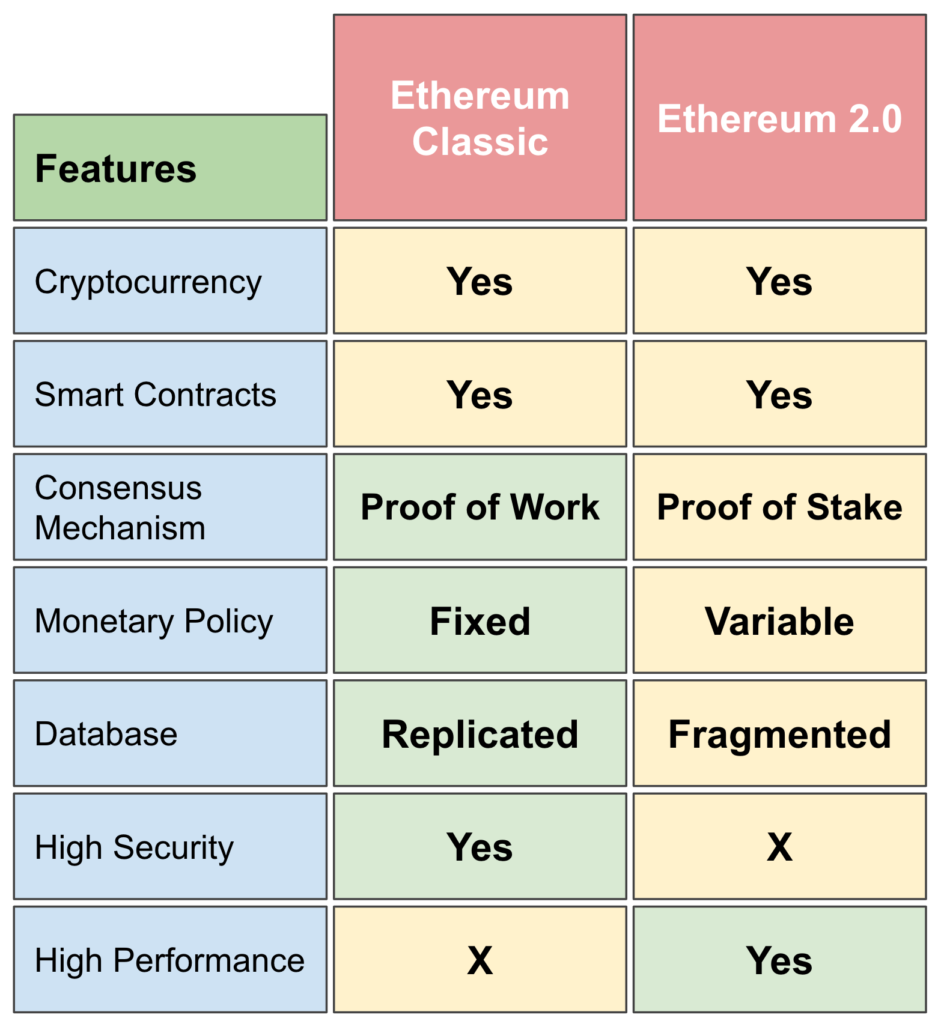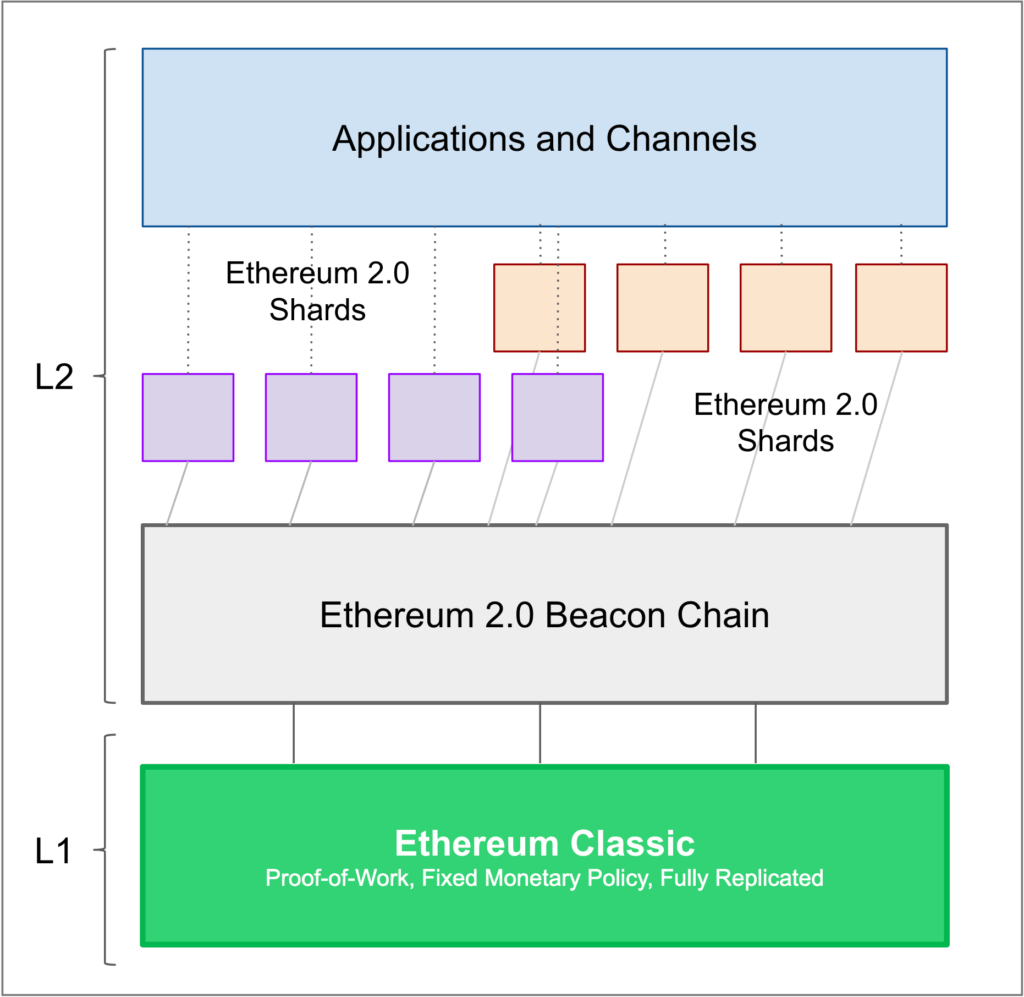You can listen to or watch this article here:
Vitalik Buterin ideated Ethereum, a smart contracts blockchain, in 2013. In 2014 financing and development of the network started, and in July 30th of 2015 the network was launched.
Ethereum is different than Bitcoin in that it can store and execute smart contracts, which are software programs that can be used as applications on the network. In 2016, one of these applications, called TheDAO, was hacked, so the Ethereum community decided to fork the chain, on July 20th of 2016, to return the money.
As blockchains are meant to be trust minimized and immutable, a group of developers and users decided to continue the original Ethereum chain with no reversals of funds. This legacy chain became known as “Ethereum Classic” while the forked irregular chain continued with the name “Ethereum”.

In order to seek scalability, the Ethereum network will be upgraded in the near future to what is called Ethereum 2.0. This will mark a further departure from the original design.
So, What Is the Difference Between Ethereum Classic and Ethereum 2.0?
As per their history and philosophy, it can be said that Ethereum Classic is a conservatively run system, focused on security, and the upcoming Ethereum 2.0 is a progressively run system, focused on performance. This clearly differentiates the market positioning for both blockchains.
Following is a diagram and explanation that compares both networks:

Cryptocurrency
Both networks are the same in that both have a native cryptocurrency, with accounts and balances that can be transferred. On Ethereum Classic it is called ether or ETC, and in Ethereum 2.0 it is called ether or ETH. For convenience, they are generally called ETC and ETH respectively in the market. In both networks, the currency can be divided up to 10^18, making the smallest unit, the “wei”, 0.000000000000000001 of 1 ETC or ETH.
Smart Contracts
Both networks also have a programming language called “Solidity” that is used to build programs that can be used as applications, scripts to operate IoT devices, or smart contracts between people and businesses. Note that, as explained above, these are just software programs that become decentralized when they are deployed and executed in the networks. Some of the software programs power decentralized apps (dapps) or devices, and others are “smart contracts” proper, which means they are actual agreements between parties.
Consensus Mechanism
This is where the differences start to emerge. As Bitcoin, Ethereum Classic uses a proof of work (PoW) based consensus mechanism called “Nakamoto Consensus“, which uses a process called “mining“. Proof of work based consensus is the major technological breakthrough of Bitcoin that enabled it to achieve such a high degree of security and value. It enables peer-to-peer blockchain networks to a) achieve consensus on the database state with a 50% fault tolerance, b) it imposes a significant cost to attackers to hack the network, and c) it imposes a cost for creating the currency which is then used as a proxy for its value in the economy. Ethereum 2.0 uses proof of stake (PoS) which is a consensus model that does not use mining, therefore has a lower fault tolerance of 33%, it does not present a computational barrier for hackers, and does not serve as a proxy of value in the economy. However, precisely for the lack of mining is that proof of stake can be used for scalability as it may achieve a higher throughput.
Monetary Policy
When both networks were unified, the schedule was to issue 5 ether per block indefinitely. In 2018, Ethereum Classic changed its model, to mimic Bitcoin, to a perpetually fixed monetary policy with a supply cap, which means that it will gradually diminish the reward paid to miners (currently it is at 4 ETC per block) until it reaches a maximum number of 210 million ETC by the end of the century. Ethereum 2.0 does not have a fixed monetary policy, therefore no cap, and the developer community is free to change it whenever they see fit. In fact, since Ethereum forked from Ethereum Classic, the reward per block has migrated from the original 5, to 3 to 2 ETH. Currently, the policy of ETH 2.0 developers is that it will continue to be flexible, that supply may be changed upwards or downwards, and there are even several proposals being analyzed to continue changing the supply, which include changing the destination of the funds. This variability, based on subjective decision making, makes the ETH 2.0 monetary policy much more uncertain as compared to the fixed model that ETC follows.
Database
In blockchain networks, the database model is a critical part of their security. The basic principle is that the blockchain has to be identically replicated in all, and as many, nodes as possible. The logic is that this extreme redundancy can not only protect the integrity of the database, which contains money, property, agreements, and other important decentralized programs, but it can survive even a nuclear war. In the case of Ethereum Classic, this model is preserved, so the blockchain is, and will always be, fully replicated in all nodes globally. As Ethereum 2.0 prioritizes scalability, it followed the strategy of fragmenting the database into smaller groups of nodes, this fragmentation is called “sharding”. Therefore, ETH 2.0 is a network of separated shards of data instead of fully replicated copies. Again, this design choice does enable a higher throughput for the aggregate network.
High Security
As Ethereum Classic has a priority to preserve the integrity of the blockchain over scalability and performance, and to maximize trust minimization globally, its design revolves around the most secure components and models. This is why the consensus mechanism is PoW based, and will be for the foreseeable future; the monetary policy is fixed and capped to guarantee property rights of ETC holders; and the database will always be fully replicated as it is an unavoidable physical reality that full replication is safer than fragmentation. This is why ETC is marked as a “YES” in this feature. In the case of Ethereum 2.0, it was marked as an “X” because it is not totally a “NO”. This means that the design choices in ETH 2.0 as to consensus mechanism, monetary policy, and database model, are somewhat secure, but offer much less probabilistic finality than ETC. This makes Ethereum 2.0, similar to traditional systems, much more dependent on subjective management of the network, which, in turn, makes it less socially scalable.
High Performance
In this feature, the situation between the networks flips. As Ethereum 2.0 has a priority to be as scalable as possible, its design revolves around faster technologies and what they call weak-subjectivity, which is the manual management of the network whenever it breaks. This is why Ethereum 2.0 uses PoS as a consensus mechanism, has a flexible monetary policy with no supply cap, and the database is fragmented so more shards can process more transactions collectively. As a comparison, ETC currently has a throughput of ~680,000 transactions a day. This is perfectly comparable to high value systems such as Fedwire (US) and Target2 (EU), who settle ~$11 trillion a day. However, Ethereum 2.0 will handle many times that number of transactions. This means ETH 2.0 will be perfectly comparable, in small transaction performance, to PayPal, Visa or even the proposed Libra currency by Facebook.
If ETC Is Highly Secure, but Not as Scalable, and ETH Is Highly Scalable, but Not as Secure, What Are They Good For?
There are several forces that will reorganize the current state of the blockchain industry into much fewer surviving, but large chains, and those systems will likely be layered according to their security and performance profiles.
Based on the description above, due to its scalability, Ethereum 2.0 seems to be a system that will be very adequate to service consumers and enterprise who will need to process high volume, low value transactions. In the case of Ethereum Classic, it will be very adequate to process low volume, high value transactions. This means that ETC will likely be a layer 1 (L1) high security network and ETH 2.0 will likely be a layer 2 (L2) high performance network.
Another idea is that ETC and ETH could actually complement each other. This means that it is perfectly possible that Ethereum 2.0 could process high volumes of low value transactions, and use Ethereum Classic in the backend to aggregate and settle them with higher finality on a relatively frequent basis. As ETC has a fixed monetary policy, it could also eventually provide sound monetary services to ETH 2.0. In return, Ethereum 2.0 would be providing a very valuable scalability to Ethereum Classic.

Conclusion
Ethereum started as a single blockchain in 2015. Then Ethereum forked in 2016, which left Ethereum Classic as the original legacy chain. ETC is naturally a much more conservative system, so its ecosystem has made design choices that preserve the highest level of integrity of its database. ETH 2.0 seeks much more scalability, so it has chosen to position itself as a high performance system.
Both networks have clear and unique positioning in the market and can cater to specific audiences with different needs and use cases. However, these differences could also be leveraged to make an even stronger and more competitive solution, preserving each one with its strengths and weaknesses.
Code Is Law